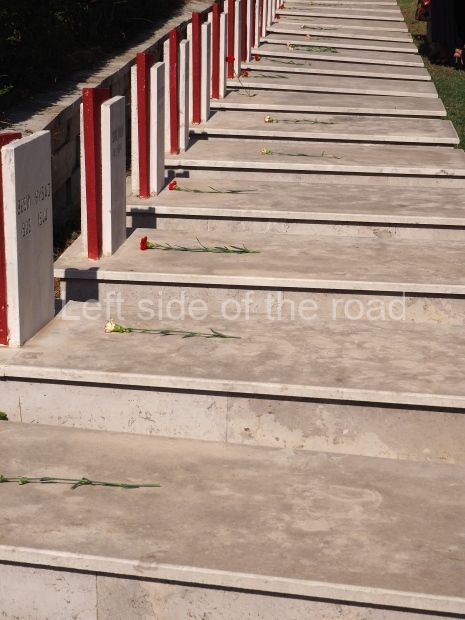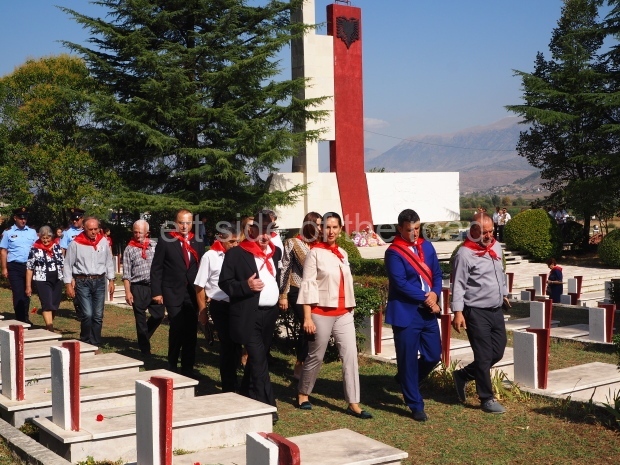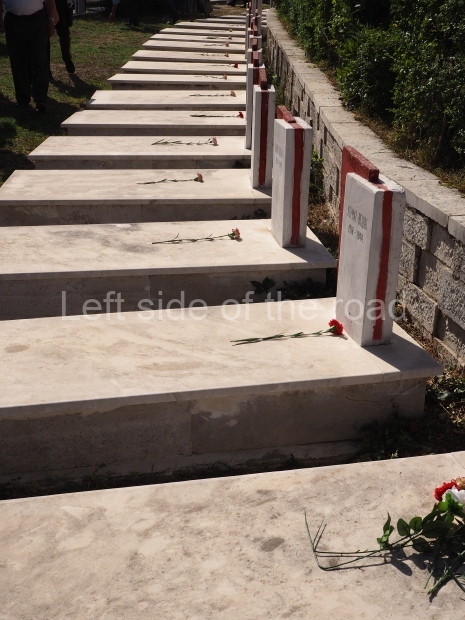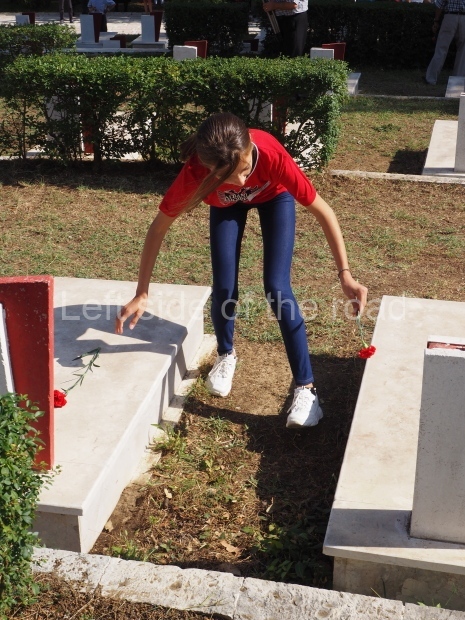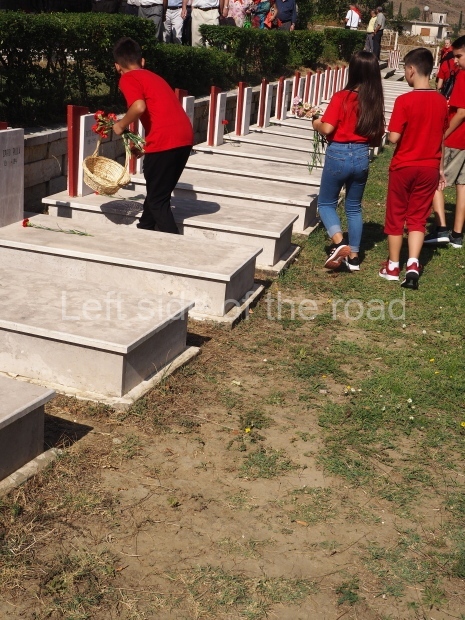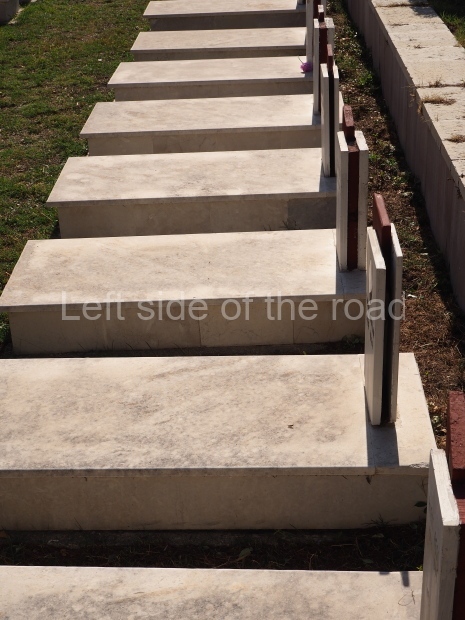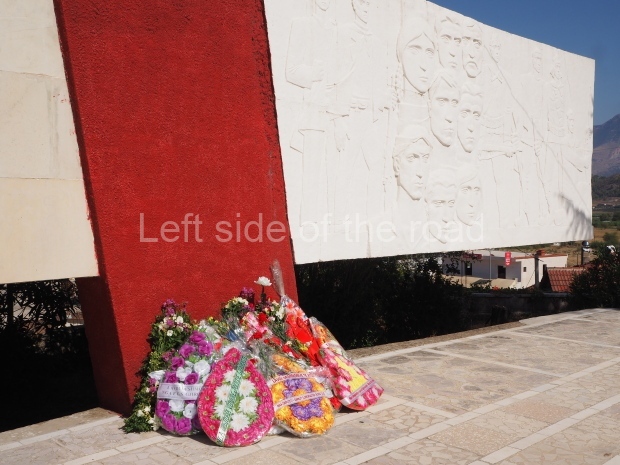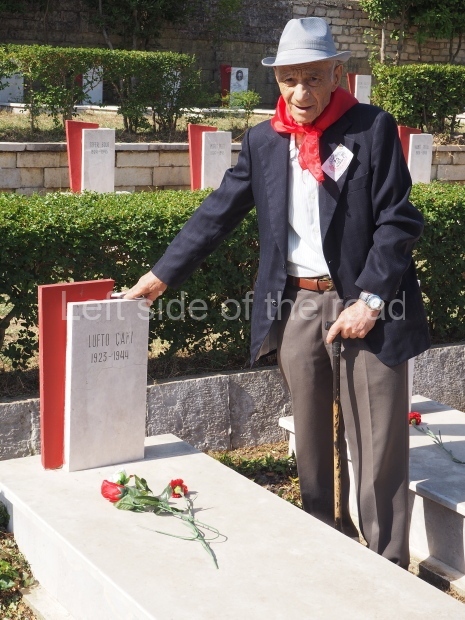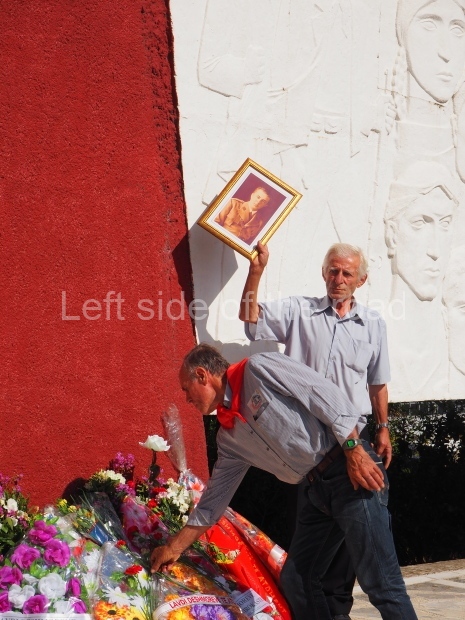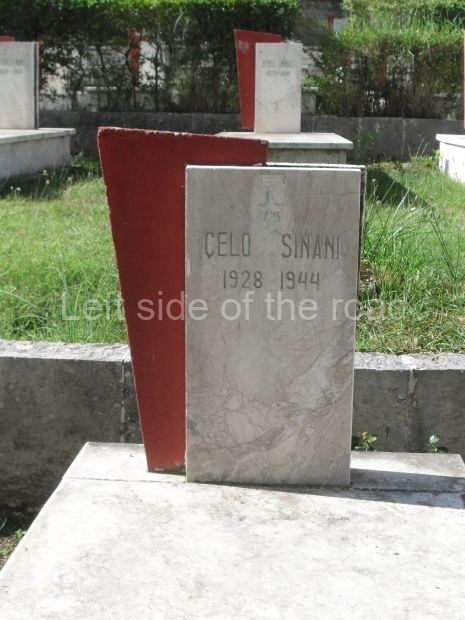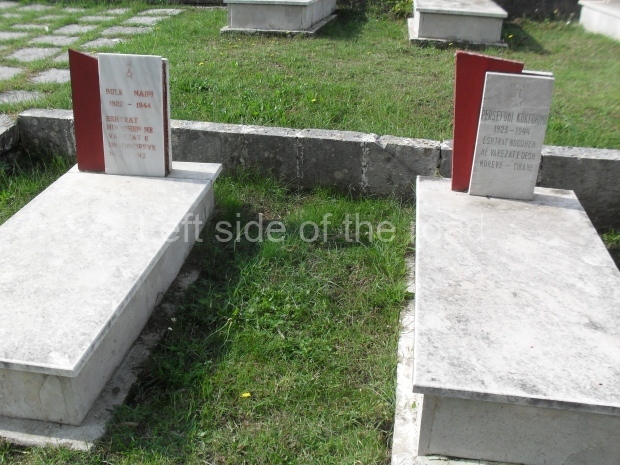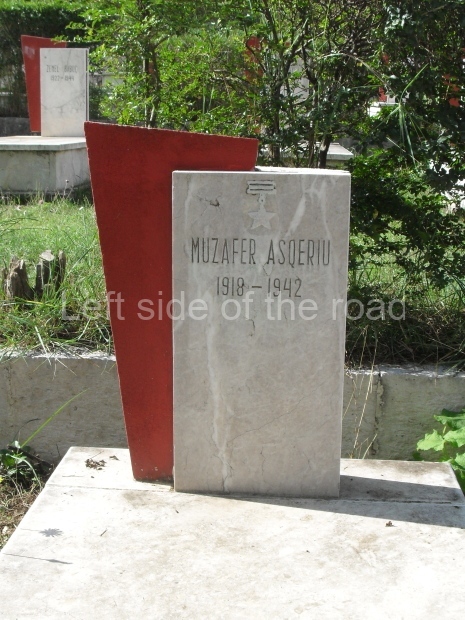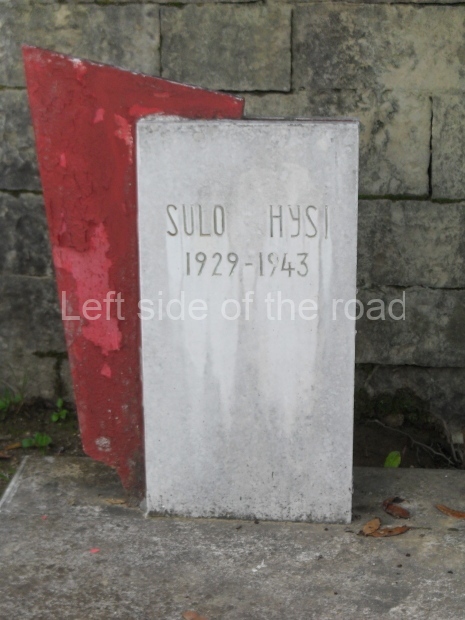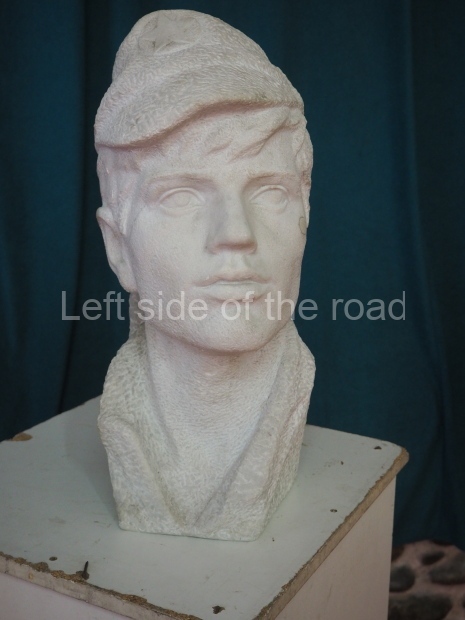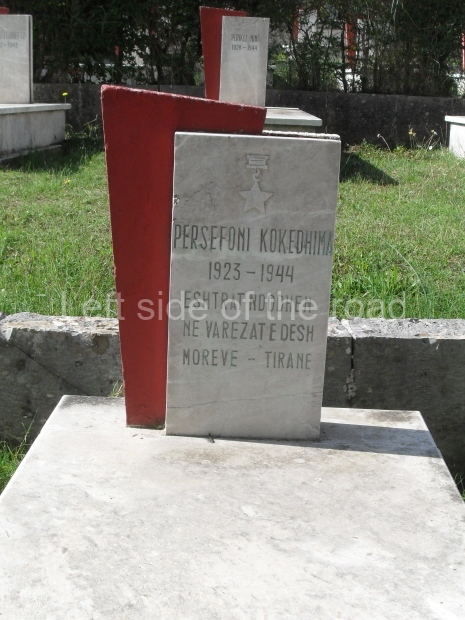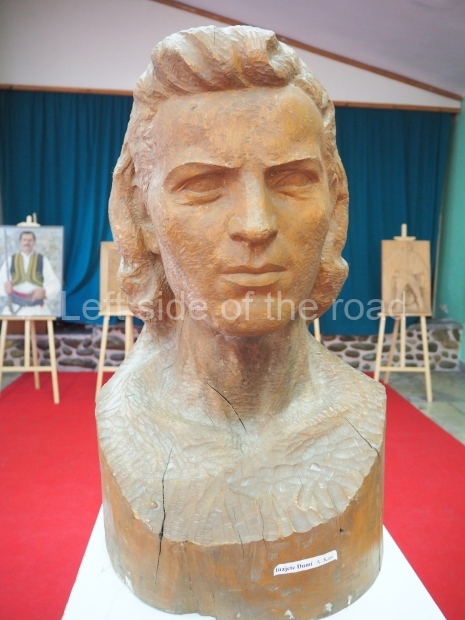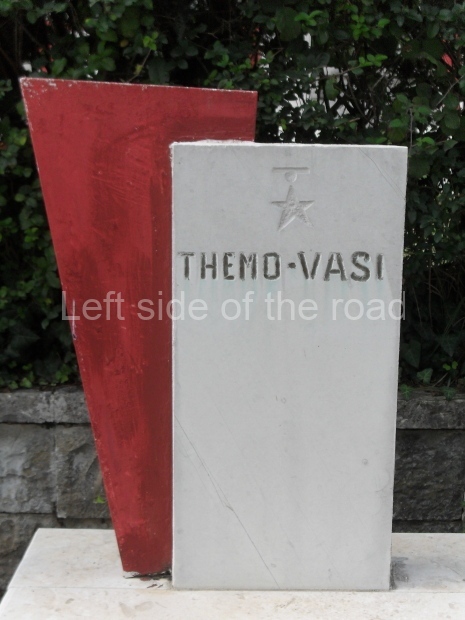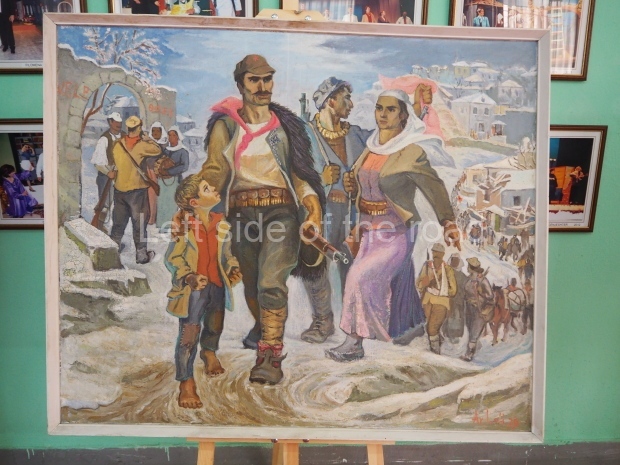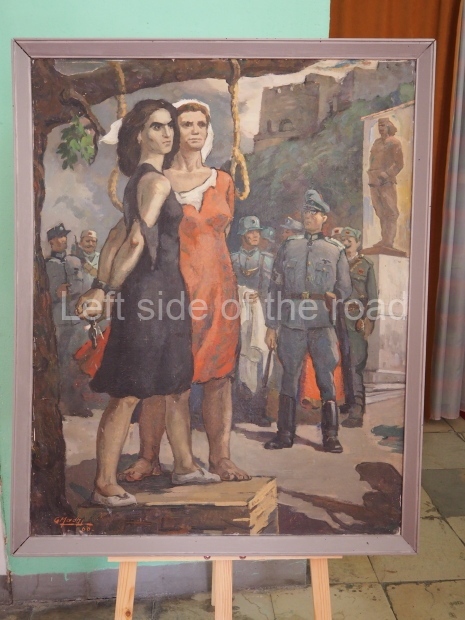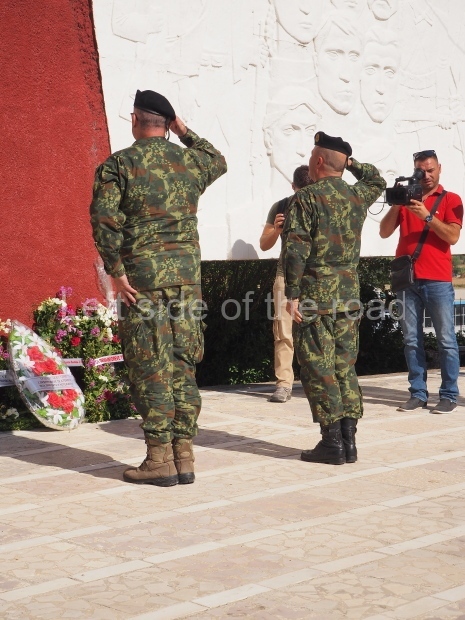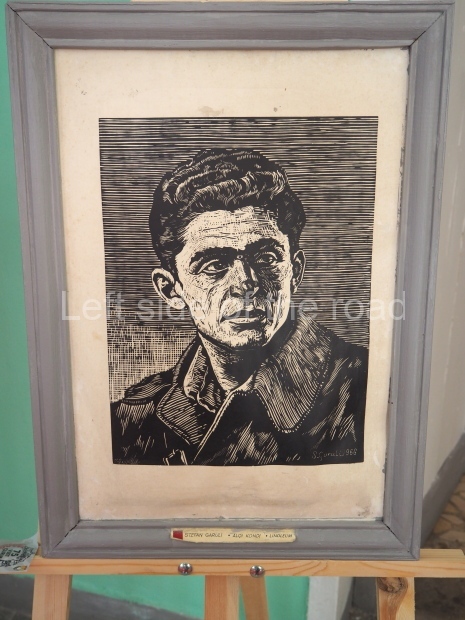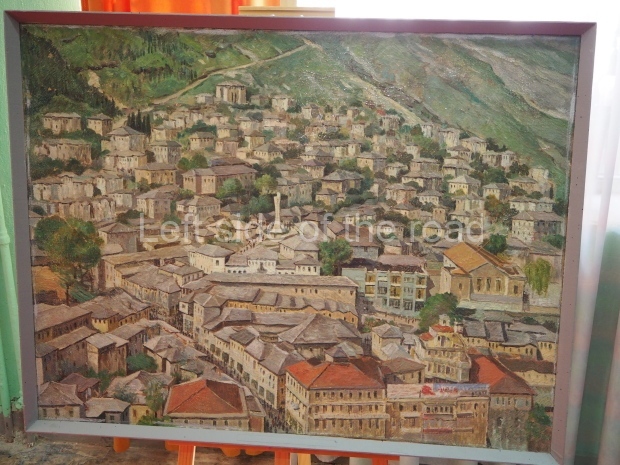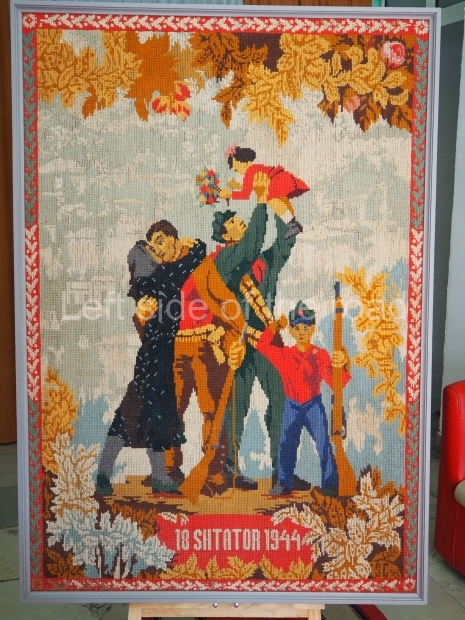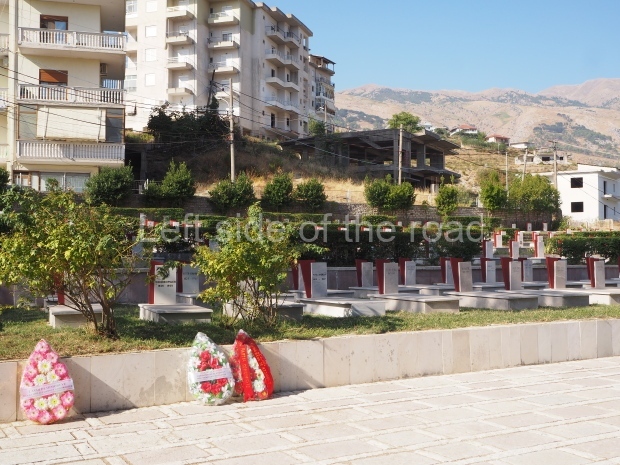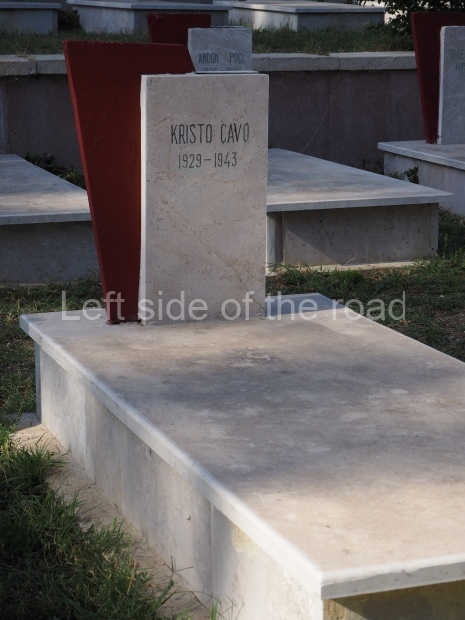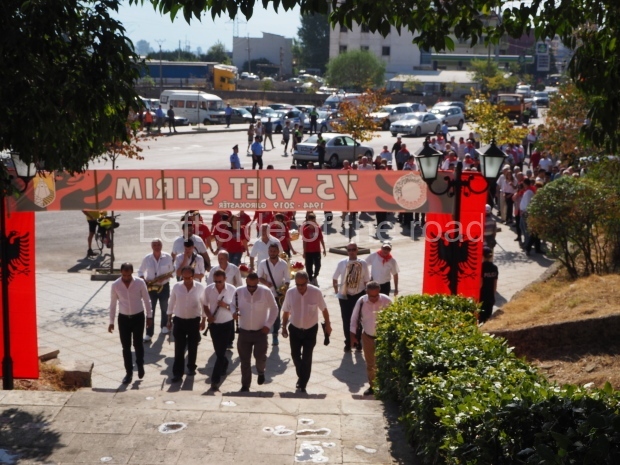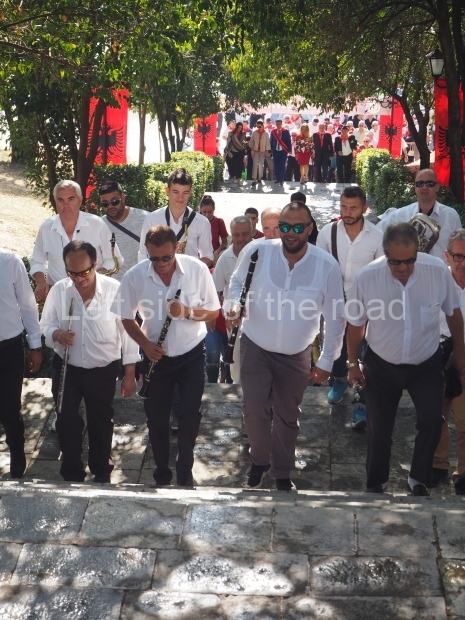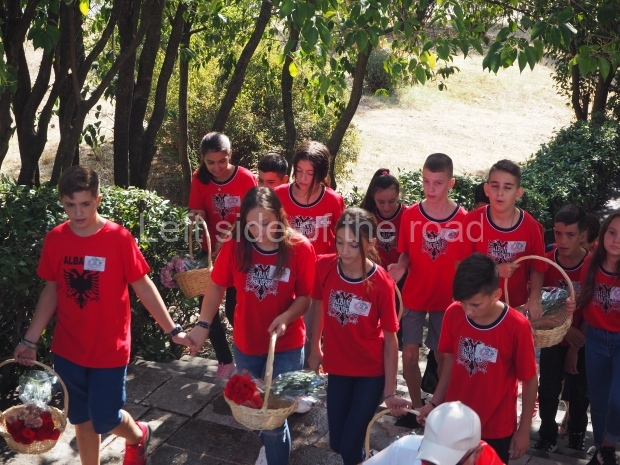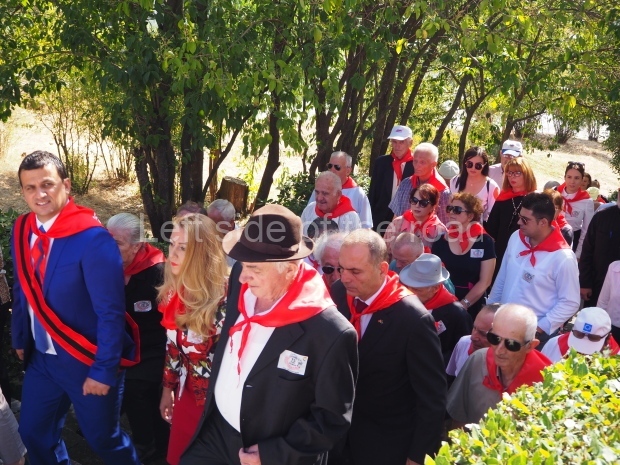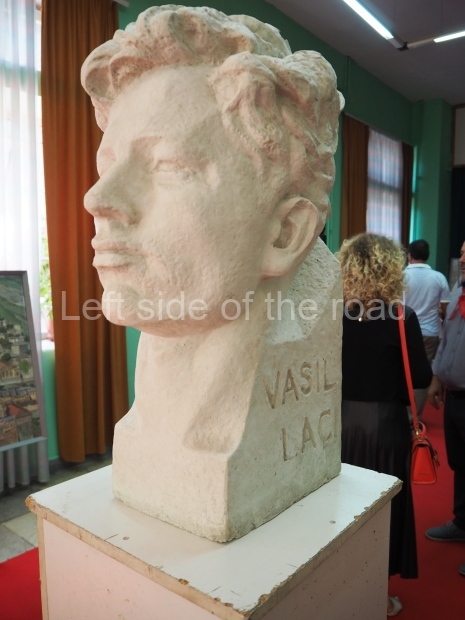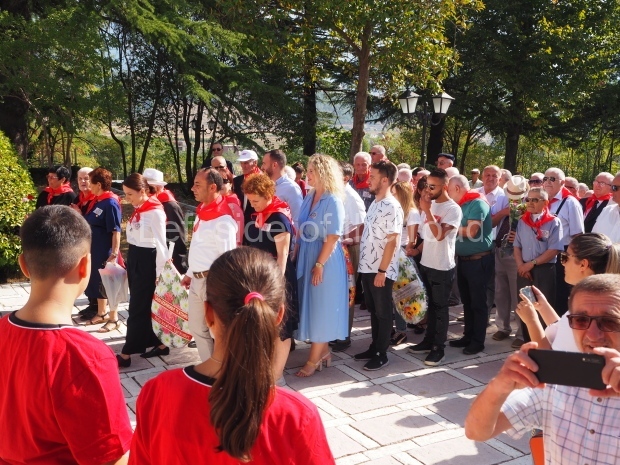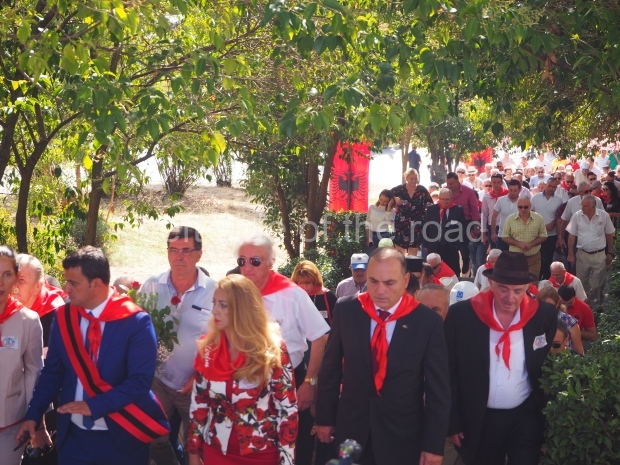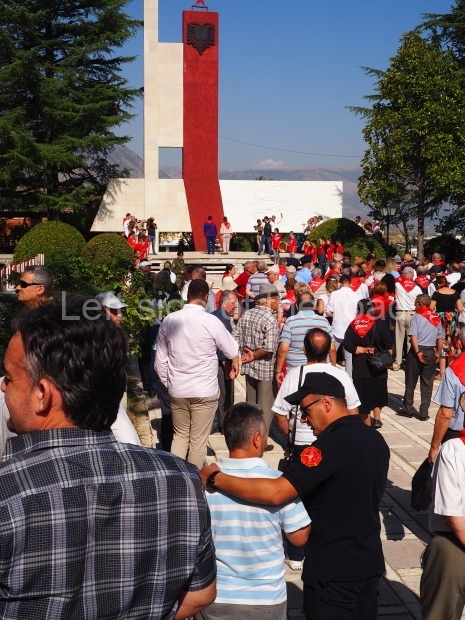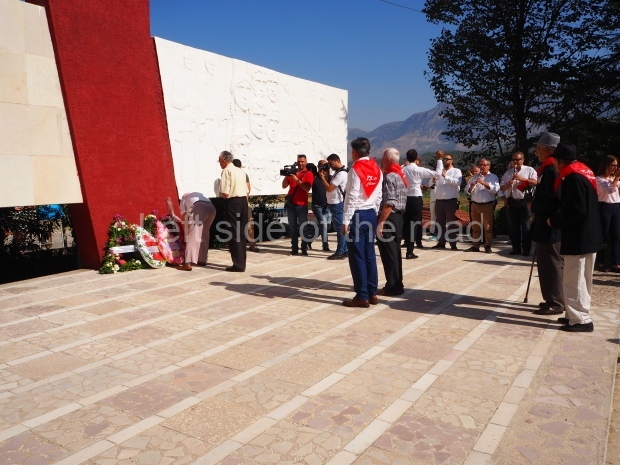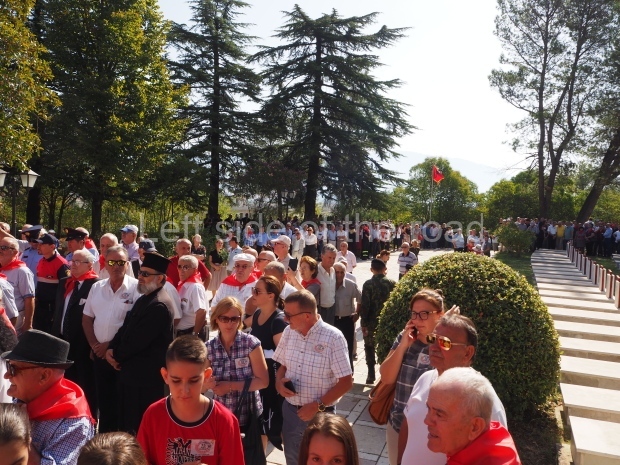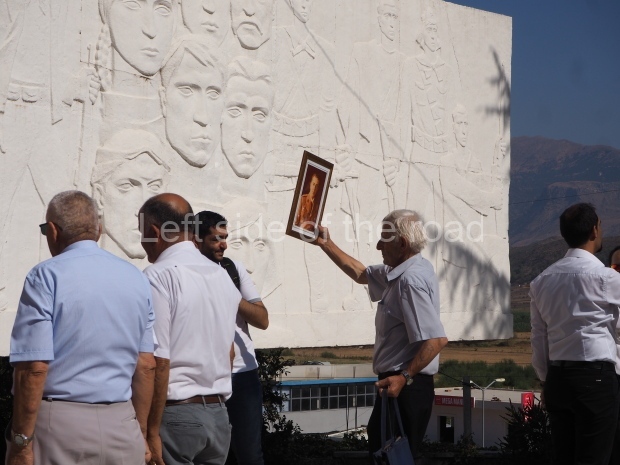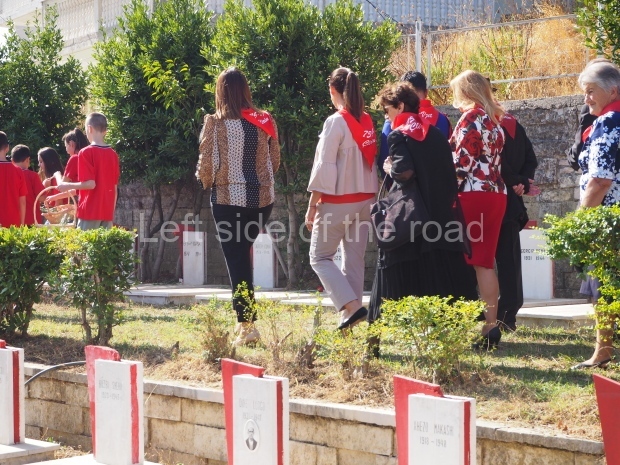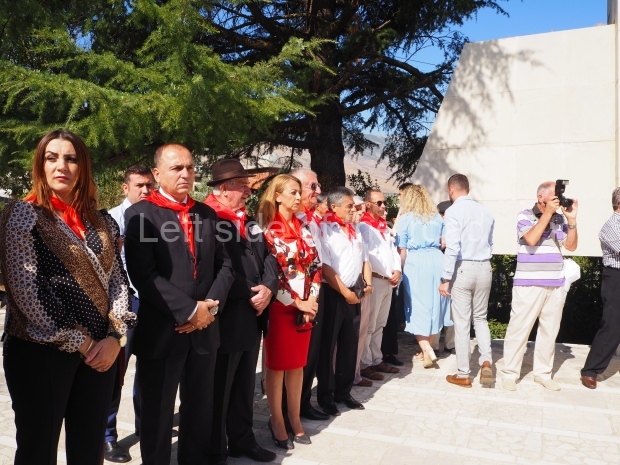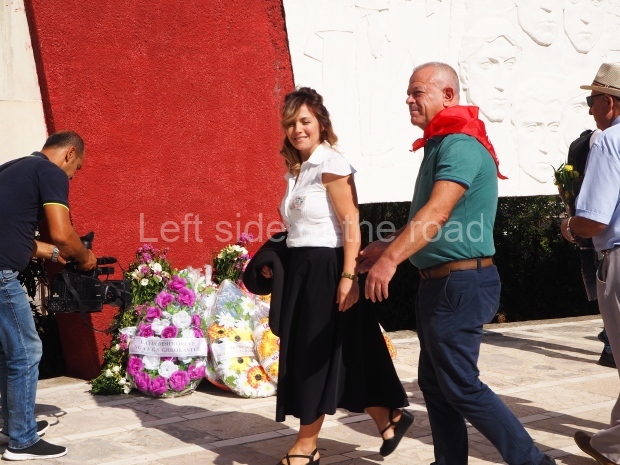Ukraine – what you’re not told
Remnants of religious thinking in Albanian Socialist Art
The contents of a small display case in the Gjirokaster Prison Museum pose a question of significance for an understanding of Socialist Realist Art in Albania in the past and the challenges facing those who want to create an art that is free from the superstitions and negative influence of capitalism (as well as that from previous repressive social systems) in the future.
One of the problems that all societies that have tried to build Socialism have had to face is the problem of the old ideas preventing the development and growth of the new. However fervent a revolutionary might be the influence of the old repressive system will always be there, in the way we act, speak and think. That, in itself, isn’t a problem. Just as we can’t control the way we look we can’t totally control the influence that the traditions and the culture under which we grew up have upon us, even though we might not like it. Those old ideas and traditions only become a problem if they prevent us from looking at the world in a different light under a system that seeks to end oppression and exploitation forever.
The revolution can change the structure and direction of society it is for us to change ourselves.
This is the reason for the ‘cultural revolutions’ that have taken place, to a greater or lesser extent, in all societies that considered themselves Socialist. That in China, between 1966 and 1976, described as the Great Proletarian Cultural Revolution, is the most well known due to the dominance it had in society in the final years of Chairman Mao‘s life but they also took place in other countries seeking to build Socialism.
In Albania the cultural revolution manifested itself in a number of ways. The construction of the lapidars which commemorated those who died in the struggle for Liberation against Italian and then German fascism, together with those that sought to celebrate some of the achievements of the revolution were all part of that. As were the paintings that were produced, a great number of examples of which were on display in the National Art Gallery in Tirana in 2021. Many others can be seen in various locations, museums and art galleries throughout the country but many are also being allowed to fall into a sad state of repair.
That’s unfortunate for those who like and appreciate such works of art but at the same time their demise is all part of the class war and at the moment, in Albania, it is capitalism which is the ascendant. The lack of care of the lapidars, sometimes to the extent of wanton political vandalism, is also a reflection of society as it is and not as we would like it to be.
The declaration of Albania as an atheist state in 1968 was also part of Albania’s ‘cultural revolution’. Although, so far, I have come across few examples of the art produced that were part of that anti-religion campaign the painting by M Jorgji, created in 1975, is a good example of how the campaign was carried out.
An Orthodox priest is surrounded by villagers and he is being forced to face his crimes, and the abuses of power, he had inflicted upon, in this case, the rights of women and girls. The somewhat long slogan written on the red banner at the top says it all;
The whole Party and the country must rise to their feet, burn fiercely and behead anyone who tramples on the sacred law of the Party for the protection of the rights of women and girls.
This was a direct attack upon the church that had been using, and abusing, its power for centuries and was an important, not to say crucial, aspect of the struggle against superstition and metaphysical ideas. However, that shouldn’t have been the be all and end all of the campaign.
Such a cultural revolution has to change the thinking of the population as a whole – and that includes those artists whose task it was to promote a new view of the world.
However, some of those artists, either consciously or unconsciously, carried their old, out-dated ideas into their work in the new society. And, to the best of my knowledge, such ‘transgressions’ (if I might use that loaded term) were either not recognised or certainly not openly criticised and publicly exposed.
Here we will look at an example of where this ‘old thinking’ manifested itself in few examples related to the murder of two Partisan women by the the German Nazis in the town of Gjirokaster in 1944.
Bule’s blouse
I don’t know if I’ve missed it in the past but on my most recent visit to the Gjirokaster Prison Museum there was a small glass case which contained a colourful woman’s blouse.
This is displayed with the label which says in Albanian;
Me keto rroba fshataret e Lazaratit e maskuan Bule Naipin ne fshat me 1944 per to mbrojtur nga Nazistet Gjermane
in English;
With these clothes the Lazarat villagers disguised Bule Naipi in the village in 1944 to protect her from the German Nazis
I’m assuming that this display case, with its arrangement and label were produced during the period of Socialist construction in Albania, to label seems to indicate so.
This blouse is displayed just under the sculpture, made by Odhise Paskali, of a twin bust of the two murdered women. In the case, towards the top, is a short piece of knotted rope.
And its the rope that introduces an interesting aspect of Albanian Socialist Realist sculpture (less so in the paintings) which demonstrates the task that a future Socialist society has to deal with when it comes to matters of culture.
By including the rope – in the glass case with the blouse, around the necks of the two young women in the sculpture above the case, as well as the statue that used to stand (and should be returned once the work is completed) in Sheshi Çerçiz Topulli – there is a very clear reference to (Catholic) religious art going back centuries.
In countless Catholic churches, throughout the world, you will encounter images of the saints together with the instruments of their torture and eventual death. The prime, and ubiquitous, example of this is, of course, Christ on the cross.
And this ‘tradition’ seeped into the work of some of the painters and sculptors when they came to produce works of art which I have included in the blog under the heading ‘Socialist Realism’.
A number of the works of Odhise Paskali contain such religious imagery – the most notable example being his sculpture in the Përmet Martyrs’ Cemetery. Here we have a group of three Partisans, one mortally wounded and a male and a female Partisan tending to and comforting him. This is an EXACT replica of countless images of the Deposition of Christ from the Cross as seen in many churches, especially in Spain and Italy – those being the most Catholic of the European states.
Now it can be said, and it was probably why he got away with it, that Paskali was already a mature, experienced and renowned sculptor before the Liberation of Albania in 1944. He was born in 1903 and even before the establishment of Socialism his work was on display in various locations in Albania.
His major works (many of which are included in the Albanian Lapidar Survey) are;
ALS 123 – Nationalist Fighter – Korça (1937)
ALS 244 – Comrades – Martyrs’ Cemetery – Përmet (1964)
ALS 246 – Monument dedicated to the creation of peoples’ power – Përmet (1964)
ALS 276 – Monument to the Martyrs of Kolonje – Ersekë (1938)
ALS 590 – Monument dedicated to the Assembly of Lezha – Lezha (1968)
Bust to Vojo Kushi in Tirana
The statue of Cerciz Topulli (1932, bronze) which stands in the square that bears his name in Gjirokaster Old Town.
The large ‘Skenderberg’ statue (bronze), 1968, in Tirana main square, in collaboration with Janaq Paço and Andrea Mano.
He also created ‘The Triumphant Partisan’ (1968). This depicts a Nazi soldier being forced to the ground by an Albanian Communist Partisan. The original is at the Mauthausan Concentration Camp in Austria – where many Albanians were taken if captured. There’s a copy in the Castle Museum in Gjirokaster.
As well as the bust of ‘The Two Heroines‘ – Bule Naipi and Persefoni Kokëdhima.
Not all of these are loaded with religious imagery but it was certainly a not uncommon aspect of his work.
And this religious influence can be seen in other, much later lapidars created by younger artists who had been brought up and educated under the Socialist system. One clear example of this is the statue at the Lushnjë Martyrs’ Cemetery, created by Maksim Bushi in 1984. Bushi wasn’t born until 4 years after Liberation but take away the gun and change the uniform to a blue cloak and you have the Madonna and Child – again very common in Catholic churches.
So this just goes to illustrate the struggle that is necessary (and the time required) for the working class to develop a body of art that truly represents their interests, clear of any metaphysical content. A new type of art, with its own symbolism and establishing its own traditions.












